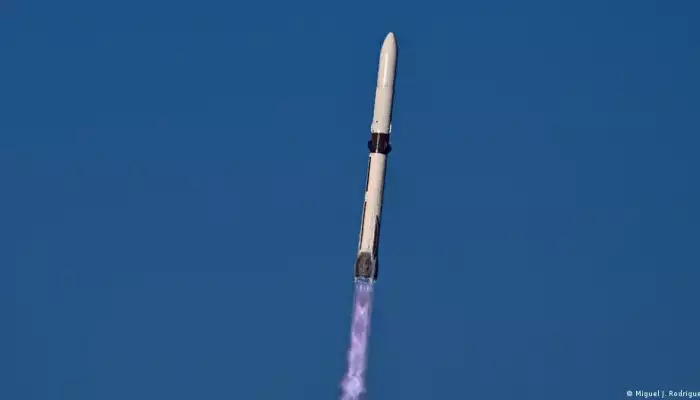
Blue Origin, the space tech company owned by Amazon founder Jeff Bezos, successfully launched its huge New Glenn rocket on Thursday, carrying with it a pair of twin NASA spacecraft bound for Mars.
The 321-foot (98-meter) rocket, named after former US astronaut John Glenn, blasted off from Cape Canaveral Space Force Station in Florida four days later than planned due to inclement weather.
After releasing the Mars orbiters, the rocket booster also successfully landed back on an offshore platform in a manner similar to that used by rival company SpaceX — but which was a remarkable first for Blue Origin.
The recovery and then re-use of the powerful rocket booster is seen as an essential part of cutting costs and making space flight more financially feasible.
'Next stop, moon!' – and then Mars?
An ecstatic Bezos watched the action personally from Launch Control, where employees chanted "Next stop, moon!" following the booster's bull's-eye landing. NASA officials conveyed their congratulations, as did SpaceX's Elon Musk.
Twenty minutes after separating from the booster, the rocket's upper stage then completed the mission's main objective by deploying the two Mars orbiters in space.
The twin NASA craft, collectively known as Escapade, will remain around a million miles (1.5 million kilometers) away from Earth for a year until the planet aligns with Mars again, at which point they will set off towards the red planet with the help of a gravity assist.
What will the Mars orbiters do?
Upon arrival at Mars in 2027, the spacecraft will map the magnetic fields and solar winds in the planet's upper atmosphere, observations which should shed light on how the planet became so dry and dusty.
"Escapade is going to bring an unprecedented stereo viewpoint because we're going to have two spacecraft at the same time," said lead scientist Rob Lillis of the University of California, Berkeley, ahead of the launch.
Scientists also want to continue studying how best to protect astronauts against Mars' harsh radiation environment on potential future flights to the red planet — although a return to the moon is planned first with NASA's Artemis program.
Musk's SpaceX outbid Blue Origin for the first and second crew landings using its Starships, which are nearly 100 feet (30 meters) taller than Bezos' New Glenn. But Blue Origin holds a NASA contract for the third Artemis moon landing.
Twelve astronauts walked on the moon during NASA's Apollo program in the 1960s and 70s, more than a half-century ago. The space agency is pushing to get astronauts back on the lunar surface by the end of the decade — and before China.